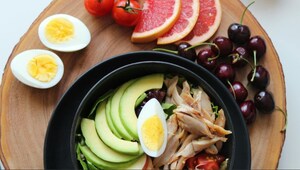Everything You Need to Know Before Including AHAs, BHAs, PHAs in Your Beauty Regime
This self-exfoliating trio is a must-have in your skincare regime for clear, smoother skin.

First off, every skin type can do with a little bit of weekly self-care routine. Exfoliation, face masking and finally, moisturizing is the quickest way to make sure that your skin is at its healthier-looking best.
Enter, skincare’s exfoliator trio AHAs/BHAs/PHAs. Call them an easy way to slough off dead skin that do not require the finger-stroking associated with traditional scrubs. AHA's, BHA's and PHA's are exfoliating acids that when applied, force the skin to self-exfoliate. They also result in glow, rejuvenation and brightening.
Which one do you really need?
However, although they belong to the same family there are some key differences between the three. For starters, all three are used for specific skin situations.
Dr Nirupama Parwanda, dermatologist and founder, Zolie Skin Clinic says, “AHAs (Alpha Hydroxy Acids) help reduce pigmentation and achieve a more even-toned skin. It is also beneficial to smooth out fine lines and wrinkles. Meanwhile, BHAs (Beta Hydroxy Acids) contains anti-inflammatory properties and reduces sebum secretion. It helps reduced blackheads/ whiteheads and acne lesions, along with reducing pigmented spots. Then, PHAs (Poly Hydroxy Acids) have a larger molecular structure than AHA thus penetrate the skin more slowly which make them great to be used for exfoliation of sensitive skin that is prone to irritation and also for conditions such as eczema or rosacea.”

So, you pick a potion depending upon the skin type and issues. As Dr Kiran Sethi, celebrity skin and wellness expert, Isya Aesthetics puts it:
AHAs are alpha hydroxy acids but they are water-soluble. So, they are more hydrating, and they unglue the skin cells from each other forcing them to exfoliate off. We typically use AHAs for pigmentation, hydration and also for anti-ageing as they have a collagen-boosting ability.
There are many types of AHA's - so their result and precautions depend on which acid it is and what the pH is and how much you apply. The lower the pH and the more application layers - the stronger the peel.
BHAs are oil-soluble – so they can specifically go inside the follicle and exfoliate in the sebum and pores. It is designed more for the anti-acne benefit for this reason. It's good for unclogging those pores and better for oilier skin types.
PHAs are super gentle versions of AHAs. They hydrate more and generally don't penetrate so deeply. They are great for glow, hydration and for sensitive skin types as well.
How can we include it in our skincare regime?
The trio can be used in the form of face washes and night applications in the forms of toners/ serums/ creams.
“Look for serums containing AHAs or PHAs at night for anti-ageing, hydration, glow and anti-pigmentation. If you have acne, look for products with BHAs to be used in the morning or night such as lotions, serums or even 2% salicylic acid face washes,” says Dr Sethi.
A word of caution though…

Using these self-exfoliators may increase photosensitivity levels in your skin, so you may have to actively protect yourself from sun exposure.
Dr Parwanda says, “The thing to really be particular about when incorporating such formulations in the skincare routine is to avoid excessive sun exposure and to regularly use sunscreen.”
more from Beauty

8 vanilla-infused beauty products for summer

#AllEyesOnB: Beauty launches on our radar this April

Make summer 2024 hotter with these steamy reads

How to build emotional intimacy with your partner

Sex tips to keep in mind during this Mercury Retrograde

What is intuitive eating and how is it different from other diets?

What the first trip with your partner says about your relationship

Signs that you’re a bad packer on your holidays and how to avoid them

Lessons that my string of unhealthy relationships taught me

Everything you need to know about the "Who is Your Chicago?" trend
